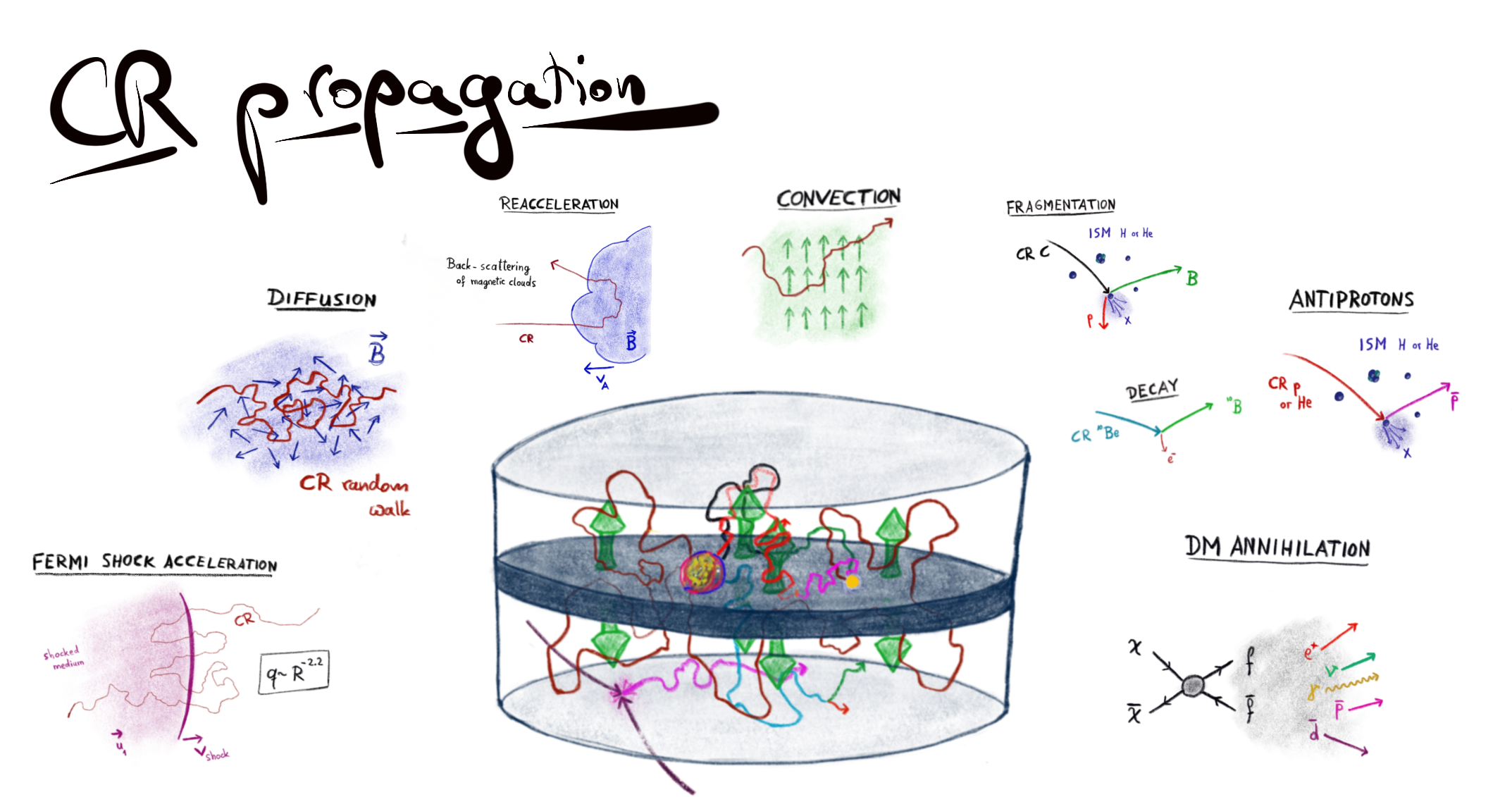I study Galactic cosmic rays, for which data is provided by space-based experiments with increasing precision.
Topics of interest
- Galactic cosmic ray propagation
- Indirect dark matter searches with antimatter in cosmic rays (positrons, antideuterons, antiprotons)
- Interpretation of high energy e+ and e- fluxes
- Cross sections uncertainties for cosmic rays predictions
About Cosmic rays
Cosmic rays are charged particles that fill our Galaxy. Their energy ranges from MeVs (106 eV) to EeVs (1018 eV) thus spanning 12 orders of magnitude. The flux of these cosmic rays follows a steeply falling power-law in energy with an index between -2.7 and -3.1. At the highest energies, our Galaxy is no longer capable to trap the cosmic rays in its magnetic field. Therefore, naturally a separation between galactic and extragalactic cosmic rays is at hand. The exact transition between the two regimes is still under discussion, however, it might be connected with the two breaks observed in the cosmic-ray energy spectrum, commonly known as knee and ankle.

I am mainly interested in Galactic cosmic rays, which are currently measured with ever-increasing precision by space-based detectors. The journey started with the PAMELA experiment onboard of the Resurs-DK1 satellite and is nowadays continued by the AMS-02 experiment mounted to the International Space Station. These detectors determine the energy spectrum of the individual cosmic ray species in an energy range from 1 GeV to a few TeV. The cosmic-ray fluxes are dominated by protons and helium at roughly 90% and 10%, respectively. At and below the percent level we observe heavier nuclei as well as electrons, positrons, and antiprotons. I analyze all the data to draw conclusions about the propagation and sources of cosmic rays. Next to standard astrophysical sources like supernova remnants or pulsars also dark matter is a viable source candidate. One important goal is to use cosmic ray data to search or constrain dark matter.